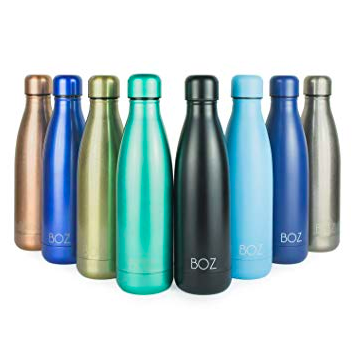Strategic branding converts meat lovers to plant-based diets
Sorry food retailers – plant-based products are here to stay and you should consider implementing plant-based in your product mix. After A&W released its Beyond Meat Burger, fast-food chains like Tim Horotons and Subway followed suit and the trend isn’t slowing down. However, language means everything when it comes to selling plant-based products, so strategic branding is crucial to succeed in converting meat lovers and appealing to plant fans.
Just how popular is a plant-based diet?
According to a study conducted by Dalhousie University, approximately 10% of Canadians are vegan or vegetarian which amounted to roughly 2.3 million vegetarians and 850,000 vegans. In the grand scheme of things, that may not seem like an awfully large number, but again – take a look at fast-food chain marketing campaigns. They’re in the plant-based diet hot seat.
At Caddle we wanted to further test the plant-based trend. Here is what we found from our 8,800 respondent panel:
- 13.5% of Canadians currently follow a plant-based diet
- 43.4% of Canadians are interested in reducing the amount of meat in their diet
- 45.7% of Gen Z’ers are interested in reducing the amount of meat in their diet
- 45.3% of Millennials are interested in reducing the amount of meat in their diet
What’s holding consumers back from converting to a plant-based diet?
“Tastes like chicken!”
Those are the three magical words you want consumers to be saying when they try plant-based. The No.1 reason why our panel said they’d struggle in reducing the amount of meat they eat is because they like the taste too much.
- 30.6% of Canadians like the taste of meat too much
- 30.3% of Millennials like the taste of meat too much
- 32.7% of Gen Z’ers like the taste of meat too much
So how do you convert meat lovers to a plant-based diet?
Talk dirty to me
Heh – get it? Cause plants grow in dirt!
GreenBiz suggests a solution to the struggle of getting consumers to switch to plant-based diets: change the language used to describe plant-based foods.
During a two year study, the World Resources Institute’s Better Buying Lab evaluated which words persuade consumers to buy plant-based.
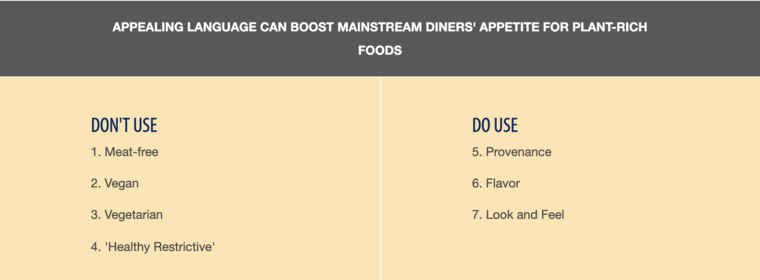
Essentially what they gathered was:
- “Meat-free” means less of what meat-eaters like
- “Vegan” means “different from me
- “Vegetarian” means “healthy — but unsatisfying — food”
- “Healthy restrictive” language such as “low fat” has low appeal
Recap
So the rising demand for plant-based has your brand in the hot seat eh? Our insights, along with other industry research suggests that you should start marketing your plant-based brand in a sexy way and have it taste just like chicken (or any other sort of meat)!
Why you need to think about DIY in product innovation
When it comes to product innovation, people have always been interested in creating and developing products themselves. If you are a brand manager who is searching for a new market trend or product opportunity, look no further. According to technavio, the value of the DIY industry is estimated to climb to 13.1 billion by 2021. This is definitely not something you can just shrug your shoulders at! You should be extremely interested in leveraging and building DIY into your business strategy and I’m going to tell you the reasons why.
Do-it-yourself (DIY): The Research
In order for us to extract the most valuable insights and perspectives, we have to ask ourselves some stimulating questions. Why do consumers participate in DIY? What kind of DIY projects are they creating and consuming? Where do people get information about DIY? Considering these questions, we were able to propose the following hypothesis:
Consumers are shifting their focus from ready-made products and alternatively, they are creating/customizing their own.
Do-it-yourself (DIY): Survey Analysis
The survey results are outstanding. We did not expect to have so many DIY advocates using our program. Here are some of the high impact results that we obtained during our research. As you are reading, please keep the following details in mind:
- Respondents are predominately females – 80%
- Millennials and Gen X account for the majority of the responses – 81%
- Approximately 40% of respondents are located inside Ontario

Almost 50% of our members indicated that DIY projects allow them to express their creativity. This is an interesting finding on two levels.
First, you can empower your customers by providing them with access to DIY resources,
Second, by embracing DIY, your customers will feel a stronger connection to your brand.

Our members are going into 2020 feeling empowered to create products on their own terms! When it comes to DIY projects, people will often use platforms such as: Google, YouTube and Pinterest in order to watch and consume instructional content for product development.
For example, the graph provided below is the number of times someone has entered the key phrase “how to” into Google search, a common phrase that indicates someones intention to complete a task independently. As a brand manager, you want to communicate with your digital team and offer “tutorial” style videos to your consumers to encourage DIY using your products. This graph reinforces that DIY is not temporary, but for the last 15 years has experienced steady increases.

Do-it-yourself (DIY): DIY Trends
We decided to consult Google trends in order to identify correlations between our findings and the general search history online. We were able to find a consistent pattern in the DIY environment.
Based on the graph below it is evident that DIY search results peak in October for five consecutive years. When we asked out members on Caddle “what time of year do you prefer to create DIY projects?” we found that 45% said summer and fall. That being said, there are definitely some promising opportunities presenting themselves during Halloween.
If you are anything like us, you want to keep digging. Ask questions like, how can we increase DIY participation in the off season? Or, how does the DIY environment change based on time of year and are there any accessibility issues that may help bridge this gap?

Do-it-yourself (DIY): The DIY Difference
So why are people all about DIY?
Not only does DIY fulfill your need for a basic product or service, but it really provides the participant with a unique and intimate product experience. The ability to work within a strong DIY community is empowering – it requires you to challenge yourself both physically and intellectually.
As we identified in our surveys, DIY allows people to express their inner creativity. If you are able to provide customers with the ability to customize their products and have a stake in the process, you can begin to capitalize on this growing industry.
Do-it-yourself (DIY): Business Opportunities
Whether you are a business looking to tap into this market or someone who is trying to build a person brand and showcase your skills online, the following information will be extremely relevant. Consider the following tips.
Have a strong social media presence
Just being online doesn’t cut it anymore, there is a lot of noise in the DIY community. The DIY business model has become reliant upon video and image based applications (Pinterest, Instagram and YouTube). In order to truly showcase the importance of social media in DIY we asked our members the following question, “where do you typically get information about DIY?”
The response was 52% of our members are using social media to get information about DIY. If you are a digital manager this is right in your wheelhouse. Take this opportunity to make your presence known by leveraging all of the available platforms and create content that is both informative and aesthetically pleasing.
Our advice to you…start building your brand on Pinterest! A whopping 32% of respondents said they get their insights from Pinterest, prior to browsing other platforms. If you are having trouble building this content from scratch, browse social media influencers to get a good idea of the do’s and don’ts.

Buying DIY
So get this, DIY supporters are creating their own products, but they also express interest in buying other peoples projects. 40% of our survey respondents indicated that they are interested in purchasing other peoples DIY offerings.
This type of purchase is far more complex and unique that than the traditional shopping experience. DIY products offer more transparency, sellers are often inspired to showcase their personality, their story and their development process. In a digital age people are basically begging to feel a personal connection between the brands they are purchasing from. Obviously they need to see value in the product, but ultimately customers will choose to connect with brands that embody their values over others.
Supporting Sustainability
There are many different reasons why people participate in DIY and evidently environmental sustainability seems to have the biggest impact. Why is this? Well, DIY advocates pride themselves on their ability to not let anything go to waste!
NBC states that that search requests for sustainability on Pinterest are up 108% since 2018! Traditional manufacturing and mass production is messy and it often leads to excess amounts of waste and environmental damage. A Neilson study indicates that 42% of North Americans are willing to pay more for companies that champion sustainability and social responsibility.
Based on our findings we don’t see this trend to becoming to a halt anytime soon. Consumers, more than ever, are advocating for more transparency amongst brands and they are willing to abandon long time loyalty for better values. Companies and D2C brands that embody this mantra will have better success with the DIY demographic. If you need more evidence of these changes, feel free to check out of blog on plastic and sustainability.
More about us
Thanks for taking the time to read our blog post. If you want to get your hands on some more data just shoot us a message, we are happy to help. If this is your first time on our webpage, you might be wondering what we do.
Caddle is a data insights company that has a passion for understanding market trends. We collect, sort and analyze data in order to provide businesses with the upper hand against their competitors. You can certainly never know too much about your consumers.
We pride ourselves on having our finger on the pulse of Canadians and our 300,000 monthly user base helps do some of the talking. What are you waiting for, let’s work together!
How to turn data into diamonds: the double diamond process
For about four years now Caddle has been creating surveys each and every day for our consumers, giving them the opportunity to earn rewards in exchange for the insights our clients need.
That’s one new survey every day for 365 days out of the year. Each survey itself has 5 questions – that’s 1,825 new questions total. Now multiply that by the amount of responses we get from each survey and my oh my, that’s a heck of a lot of data to sift through!
You may be beginning to wonder how we come up with all these surveys.
Cue the Double Diamond Process. Using this process we’re able to diverge and converge throughout multiple processes and refine a topic into priceless insights you need.
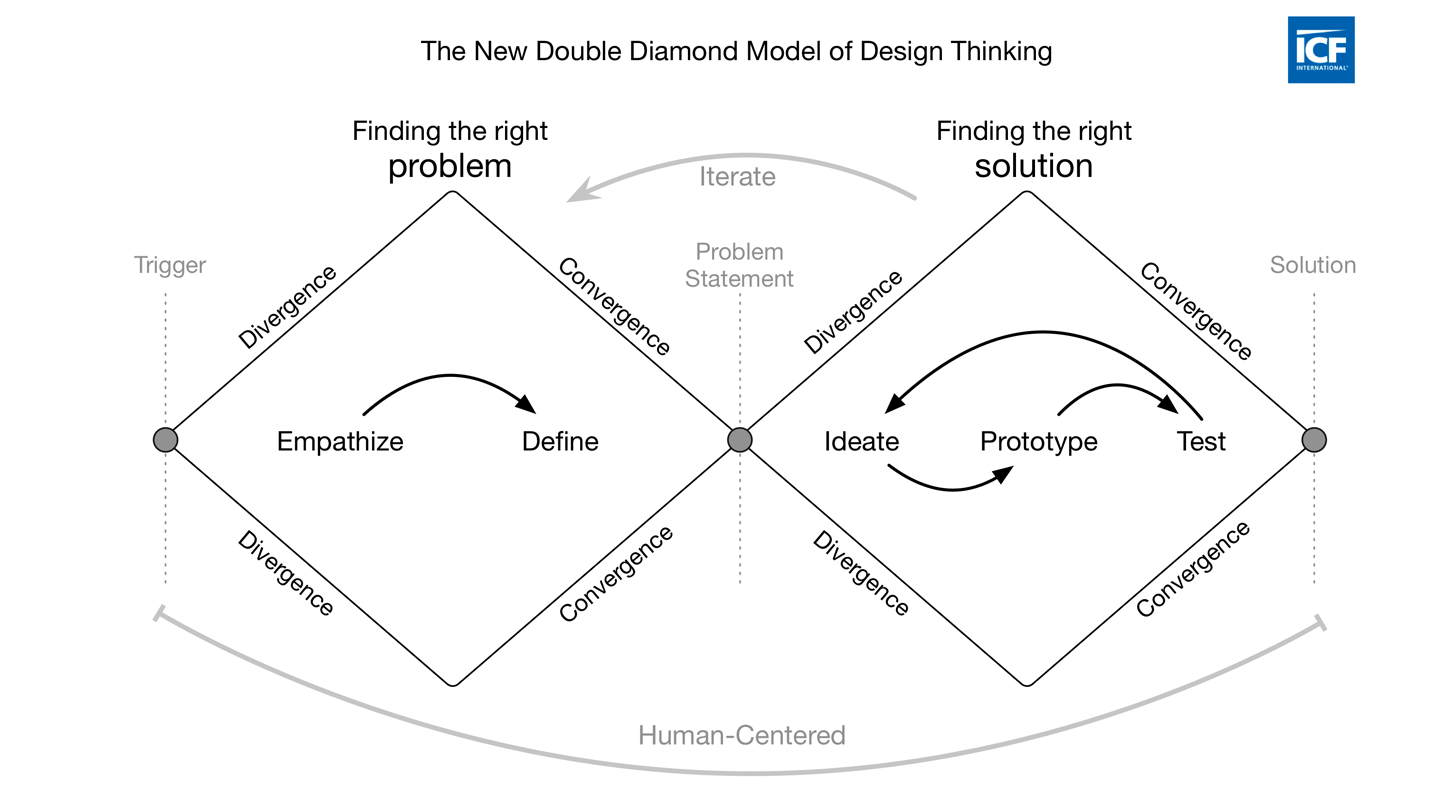
A spin-off from the divergence-convergence model proposed in 1996 by Bela Banathy, the Double Diamond Process was popularized by the British Design Council in 2005. Today, the Daily Survey team at Caddle uses the process from start to finish when creating surveys and collecting valuable insights for industries who need it.
Step 1 – Find a Trigger
By staying up to date via social listening and paying attention to the news, each month the Daily Survey team creates monthly cycles that will help frame topics that will be researched.
For the month of January, one topic we were interested in investigating was new consumer experiences.
Step 2 – Widen your lens on the world
Once we’ve selected a topic from the cycle, we diverge and take a deeper dive. We challenge ourselves to think through all areas which intersect with the trigger.
This can often feel like boiling the ocean, so in order to be efficient with our time, we use the Pomodoro method. This amazing growth hack forces focus, and helps us prioritize what’s most important. Here’s how it work
- Each team member chooses a topic to explore
- Moderator sets timer for 25 mins
- Each team member goes through four, uninterrupted 25-minute cycles of research and brainstorming to come up with topics of interest.
- Between work sprints, the moderator asks the team some open-ended questions about their work and looks to further expand thinking.
Step 3 – Daily survey creation
Once the team has curated a surplus of topics and questions, it is over to our question sorter to build out our research schedule. During this stage, questions are grouped into 5 question surveys, which provide a unique lens on a current issue.
For the new experiences cycle, DIY culture was one of the areas we focused on, as we had a hunch that DIY experiences were on the decline with consumers.
Step 4 – Find the pain
This is when the Daily Survey team breaks out their bets. The team discusses the survey questions and begins hypothesizing on what the data will answer to our questions.
Is it a dying culture? What experiences and emotions do people most associate with DIY culture? These were all questions we were going to ask and get answers to.
Step 5 – Data collection
Once the surveys have been finalized, they go live on our platform where members answer the survey and receive a cash reward in exchange for the data they’ve so graciously provided us.
The data science team then neatly compacts the data into a data mining report that can be easily used to break down the survey responses by gender, age, demographic, and any other filters we might find useful.
Step 6 – Show me the insights!
These reports are then handed off to the marketing team where they begin a charting process, highlighting the most interesting insights that tell a story about the DIY consumer experiences.
In this instance, insights suggested that DIY culture is ripe for disruption in the self-care industry.
Step 7 – We have a few more questions…
The marketing team then conducts further research on the particular industry to determine why DIY culture has the potential to disrupt the self-care industry.
These findings, in relation to the insights we gathered are then curated into marketing content that is shared on our blog for industry experts to learn more about.
Step 8 – Review our report card
We look for a couple of things when investigating success and failure. In order to identify insight paths for new products, we tend to look for 40% or more of responses aligned on interest.
When evaluating disruption in the product life cycle, we align our thinking with Growth Hacking expert, Sean Ellis, author of the bestselling “Hacking Growth”. Sean has popularized the idea of product-market fit, which has a lot of value as you decide your priorities using this funnel. Sean has often said that if at least 40% of your existing users wouldn’t be “very disappointed” if your product disappeared then you don’t yet have product-market fit.
Often there isn’t a clear solution to the insights we’ve found. But that’s okay, Caddle loves when this happens! That means that we get to probe the subject even further and continue the double-diamond process.
To delve deeper into a topic, we’ll propose new questions that we’ll ask in upcoming surveys to draw further conclusions. We’ll also reach out to the reader who may have a particular question about the insights we’ve gathered and include it in our survey research.
You can follow our double-diamond process by checking out the blog we wrote about the DIY culture and its potential to disrupt the self-care industry.
If you’d like to follow this DIY journey, make sure to keep up to date with our blog. Similarly, if you have questions about your industry that you want answered, make sure to reach out to us!
Here’s why you should be using MaxDiff in your market research
First off: what the heck is MaxDiff?
In layman’s terms, it’s the process of elimination by comparing the best and worst factors. Sound’s easy, right? That’s because it is (for us data scientists at least)! When getting into the nitty-gritty, there’s more to it. In the past, we’ve included this technique and it’s done wonders for getting the insights we need.
Comparing Apples to Oranges
Let’s say you’re planning a road trip and you can’t determine which route is the best to take for a multitude of factors:
Route A Includes: Route B Includes:
• Beautiful scenery • Familiar route
• Great food along the way • Cheaper gas stations
• Shorter travel time • Longer travel time
• Don’t have to see the in-laws • Have to see the in-laws
You’re stuck between a rock and a hard place, right? Both routes have pros and cons so how are you going to determine which is the best route to take? Hello, MaxDiff (insert superhero music)!
MaxDiff allows you to compare each element and rank them from most appealing to least appealing – which might look something like this:
Best to worst options ranked
• Don’t have to see the in-laws
• Familiar route
• Shorter travel time
• Beautiful scenery
• Cheap gas stations
• Great food along the way
• Longer travel time
• Have to see the in-laws
Based on your decision to rank the best options compared to the worst options, you might choose to go with Route A.
Great but how can I use this at work?
We’re glad you asked! Have you ever noticed that one product claim drives more sales than what it does in another part of the country? With MaxDiff you can test which one claim will drive the best sales for both of your consumers. This helps you get better insights from consumers because they need to actually rank what’s most important and what’s not.
You see, whether it be packaging, pricing, or claims testing, getting that call to action can be difficult. If you’re unsure of which call to action is best for your product, we encourage you to give MaxDiff a shot. You can inquire here!
Canadian Debt:
Are Canadians struggling with debt?
There is an old, unwritten rule, that goes a little something like this “Don’t talk about your finances with anyone”. Some quotes like this are timeless but I think that this one has run its course. Canadian debt is becoming a serious problem that definitely requires more attention.
Financial education is something that should be widely accepted and embraced by all. According to CBC news, Millennial debt has shown a 12.3% increase since 2018 and sits around $515.9 billion dollars. To make matters even more concerning, its younger counterpart, Gen-X is hovering around $767.4 billion.
Now, this statistic does not happen to consider if this is “good debt” or “bad debt”, which we will cover later, but is still cause for concern. We must start asking ourselves serious questions about how we are spending our money, where we should we invest our money, and pursue a new standard that allows for more openness about our financial situations.
Canadian Debt: You are not alone
Do you feel like you are constantly running away from your credit card statement, mortgage payments, and utility bills? Truth be told, you are not alone. Consider these Canadian statistics for a moment:
- 94% of Canadians agree that the average household has to much debt (Manulife Bank Debt Survey)
- 84% state that getting out of financial debt is their number one priority
- 30% feel that they can’t do things they enjoy because of debt
- 67% of Canadians assume that others are also in debt
- 40% think that they will not become debt free in their life-time

Canadian Debt: Good debt versus bad debt
When we hear the word debt, usually the worst comes to mind. What if I were to tell you that debt can be broken down into two categories: good and bad? A survey with over 8000 respondents, conducted by our team at Caddle, indicated that 54% of our members are only slightly familiar with the concept of bad debt. That being said, let’s analyze the differences.
Good Debt
This form of debt involves taking out a loan or refinancing a property in order to use the equity to invest into something that will ultimately generate income. Good debt includes, but is not limited too, investing in your education, opening a small business, or real estate and homeownership. This type debt is two-fold because as you are making the payments for your loan you are developing a relationship with your financial institution and therefore, increasing the likelihood of getting a larger loan in the future.
Bad Debt
Bad debt is when you borrow money in order to purchase a product or service that will decrease in value instantaneously or over time. Some examples of bad debt include cars, jewellery, clothing, consumables, and credit cards. Not only is the product or service that you have purchased going to decrease immediately, but you will also have to pay interest on the amount spent.
Canadian Debt: Credit Card Debt
With Canadian’s debt statistics on an upward trajectory, it’s important to identify some of the key contributors. With low interest rates, low unemployment, and rising wages, it is uncommon for us to be experiencing this particular issue. The most common culprit when it comes to bad debt is the credit card. Average non-mortgage debt per Canadian citizen is predicted to hit $31,000 by the start of 2020.
Consequently, we are also seeing increases in Canadians carrying credit card balances, in the amount of $4,465 on average. Now, depending on your existing credit card provider you may be able to leverage the benefits and mitigate the risks. Most credit cards come with some sort of rewards incentive to differentiate themselves from the competition. You can make the most out of these rewards if you are diligent and pay your owing balance by the end of each billing cycle. Some of the common credit card benefits include:
- Cash back
- Travel rewards
- No annual fee
- Purchase insurance
- Travel insurance
If you are not aware of your credit card rewards system, go check right now! Most companies incentivize certain purchases such as gas, grocery, or pharmaceutical.
Canadian Debt: Saving Money
Saving is one of the those concepts that sounds and looks easy, but never works out the way you planned. For me, I decided to look back at one of my most recent financial statements and see what I am spending money on. I had over 5 different monthly subscriptions! Why am I paying for Crave, Netflix, and Amazon video? Whether it is our skin care products, coffee, food, streaming services, or web services, we often don’t realize how complacent we become with our spending habits. Let’s dive deeper and look at what Caddle members had to say about savings.
Canadian Debt: Saving... why is it so hard?
The following statistics are a representation of over 8000 Canadians opinions on financial debt and savings.
- Only 28% of members are likely to seek out information about saving money
- 23% state that the cost of living (goods and services) are the main reason why they can’t save money
- 21% state that their regular expenses restrict their ability to save money
- 27% are somewhat likely to consider using a financial savings app to help track and assist with their savings goals

Canadian Debt: Recommendations
Debt is something that can be conquered if you are willing to invest your time and become a diligent record keeper. It is important to utilize the available assets and never be afraid to ask questions. Often, people are intimidated by advisors and have preconceived notions about the amount of money required to begin saving and get out of debt. As someone who is currently working in the financial industry no amount is too little to begin saving. There is no better time than now to evaluate your financial future. Get started by using some of the tips provided below:
- Use the Caddle app to earn cash back and save on your monthly expenses, obviously 😉
- Use financial apps like Mylo in order to save the additional change on every purchase
- Talk to your financial advisor or do some window shopping (make sure you are getting the best services on the market)
- Ask questions about your credit card and rewards programs (check out this list: best credit card Canada)
- Look into debt consolidation if you owe money to multiple institutions
- Open a High Interest Savings Account (HISA), Tax Free Savings Account (TFSA), and a Registered Retirement Savings Plan (RRSP)
Good luck with your savings and remember to answer those surveys to help create awareness about topics that interest you. They can help promote product changes and influence brands to provide you with more of the services you desire.
More About Caddle
Thanks for reading our blog post! If this is your first time on our webpage you may be wondering who we are and what we do?
Caddle is a data insights company that has a passion for understanding market trends. This information is then translated to the market industry leaders for the benefit of understanding the buying behaviours of their consumers. We keep our finger on the pulse of Canadians with over 8000 daily survey respondents and 300,000 monthly app users. Contact us for more information and resources.
Black Friday & Cyber Monday: Earn Money While Spending
The Exclusive Handbook for Canadians
Black Friday and Cyber Monday Canada
The long-awaited and long-anticipated Black Friday deals are just around the corner. We know that you are starting to gather some holiday gift ideas or maybe you are planning on treating yourself to some new electronics this year.
You are one of the many consumers who plan on participating in holiday shopping this year. According to CNBC, the average consumer is looking to spend at least $1300 this holiday shopping season!
In the past, Black Friday has definitely got out of control. We have all seen the YouTube clips of shoppers fighting over the last TV or bursting through the doors as stores open as early as 7:000 a.m. However, things are changing in the digital age, and this may be for the better.
Black Friday is beginning to face some new competition from its younger sibling, Cyber Monday, which is predicted to generate approximately 10 billion dollars in 2019. A healthy amount of competition may drive prices even lower.
We also see deals starting earlier and running later as the competitive climate begins to boil for Canadian retailers. Between Boxing day, Cyber Monday, and Black Friday your head might start to spin.
When is Black Friday and Cyber Monday in Canada?
Black Friday deals may have already been activated depending on the retailer and the type of product that you are searching for. The traditional date that is associated with this shopping holiday is November 29th. Usually, there are additional, exclusive promotions that are announced on this day.
Retailers such as Amazon, Best Buy, Walmart, Canadian Tire, Chapters, Costco and Ikea, are already promoting their Black Friday deals. According to Business Insider, in-store Black Friday discounts often outweigh the online offerings. It is also recommended that you purchase “big-ticket items” on Black Friday as opposed to Cyber Monday.
Black Friday Purchases
- TV’s
- Laptops
- Video game consoles
- Furniture and appliances
- Travel (hotels, flights, all-inclusive packages)

If at first you don’t succeed try, try again. If a product sells out, or you couldn’t make it to the store because of work, or you simply can’t justify the existing price, you have a second opportunity to get those items on your wish list.
Cyber Monday lasts 24 hours starting December 2nd and has been deemed as the best time to purchase tech products, especially niche gadgets. Some of the early discounts that have already been released are listed below.
Cyber Monday Purchases
- Wireless earphones
- Smart speakers, watches, and appliances
- Security systems
- Phones and tablets
- Clothing and accessories

Black Friday and Cyber Monday: Caddle Members
In order for us to give you the best advice and deals at Caddle we wanted to know how you plan on purchasing your products this holiday shopping season.
We conducted two surveys 1) Black Friday and 2) Cyber Monday, to see if our members are going to take advantage of the huge savings. The average number of respondents was 8,350 and the majority of the members ranged between the ages of 27 and 36.
Member Responses
Black Friday:
- 68% of members are interested in participating and shopping on Black Friday
- 56% of members are going to use their credit card to make purchases
- When asked if Black Friday was better than Cyber Monday over half of the members felt neutral (indifferent)
Cyber Monday:
- 57% are interested in Cyber Monday and 32% of members plan on participating
- 66% of members make purchases online
- 35% stated that they are going to browse the deals
- 45% of our members feel that online shopping is safe and secure

Consider these two tips:
- If you are paying with a credit card make sure you are receiving cash back or travel rewards points. Make money while spending money.
- If you are making online purchases ensure that your payment method is secured, keep a record of your transaction number, and see what fraud policy your bank offers.
Black Friday & Cyber Monday: Price Matching
Trust me, I’m not talking about that person at the grocery store who says “I know I have a coupon for that somewhere”. Price matching has become easier than ever with the help of our smartphones!
Most stores are beginning to offer a low price match guarantee in order to keep your business and decrease the number of product returns. Not to mention the accessibility of receipt uploading, browsing digital store flyers, creating a digital wish list or shopping cart, viewing promotions, registering for email lists, and coupon apps (yours truly, Caddle) that are all available at the touch of a button.
Institutions such as Meridian Credit Union have also implemented a new system called price drop. You upload your receipt and the app will notify you about any price adjustments and deposit the difference right into your bank account.
Black Friday & Cyber Monday: Online Versus In-Store
So you might be wondering, what platform is going to offer the best deals. The fact of the matter is that it’s actually quite subjective and product-specific. An article by Time Trade indicates that:
“The bottom line is customers value the personal experience of the physical store,” said Gary Ambrosino, CEO of TimeTrade. “We found that shoppers have done their shopping or discovery online, then go into the store to get help with their final purchase decision.”
Some products are just better to purchase in-store, especially when it comes to customizable products. Let’s be honest, when you purchase a tech gadget online you know what you’re going to get, the equipment is relatively standardized.
On the other hand, if you are purchasing a mattress you probably want to test out the comfort level, look at the size, and ask some specific questions.
If you do purchase online just make sure that you are able to return the product if it doesn’t satisfy your needs. Some retailers will charge you an additional shipping expense when you return the product, so it’s important to keep that in mind.
Lastly, there is no exact formula that determines which method leads to more cost savings but shopping online does have its perks. It will certainly provide you with more product selection, increased availability, and convenient shipping.
Get a Competitive Edge
Now that you are fully informed about Cyber Monday and Black Friday here are some tips to stay up to date with the deals:
- Subscribe to email newsletters
- Abandon your cart
- Look for updates on social media
- Use coupon apps
- Read the reviews

About Caddle
Thanks for reading our blog post! If this is your first time on our webpage you may be wondering who we are and what we do?
Caddle is a data insights company that has a passion for understanding market trends which can be translated to the market industry leaders for the benefit of understanding the buying behaviours of their consumers.
Click this link to find out more and earn some cash back from our surveys!
[simple-author-box]
The Canadian Food Guide: No longer a prescription diet
The push towards a plant based diet
Canada’s Food Guide
We are constantly changing the way that we are eating. It could be because of something you read in a weight loss magazine, heard through the grapevine, or maybe even a new trending diet on Instagram. In today’s technological era it’s tough to determine what’s authentic and what’s just straight-up fake. One resource that you can trust has just presented us with a new guide to healthy living. Enter – the new and improved Canadian food guide!
It’s getting three cheers from some and eye rolls from others.
Canada’s Food Guide: So what has changed?
It is no surprise that the Canadian food guide has seen its fair share of changes since its publication in 1942. That being said, the guide has been in a 12-year hiatus and Canadians are eager to see what changes are being made.
The process has so far taken three years, with Health Canada hiring various market research companies to consult with more than 26,000 Canadians. Health Canada has also held briefing sessions with various health associations and industry groups. – CBC News
As Canadians, we rely on the national food guide to decrease the number of nutritional deficiencies and increase overall health. In the past, it has provided us with portions sizes, food groups, cooking tips, and scientific research. It helps us ensure that our loved ones live long and healthy lives. We can see that the updated guide is exploring a new direction that reinforces a vegetarian style diet (plant based) and kicks the food groups to the curb.
That being said, the food guide is a one size fits all approach. It may not be considering your personal deficiencies, body type, lifestyle choice(s), and you should use it as a reference when planning meals. The best course of action is to consult a nutritionist or specialist before making significant changes to your own diet.
Here are the changes that we have identified
- More focus on a plant-based diet(s)
- Dairy and meat are being pushed out
- No more four food groups
- Eat more fruits and vegetables
- No more portion sizes
- Increase your water consumption
- Food philosophy (eating together)
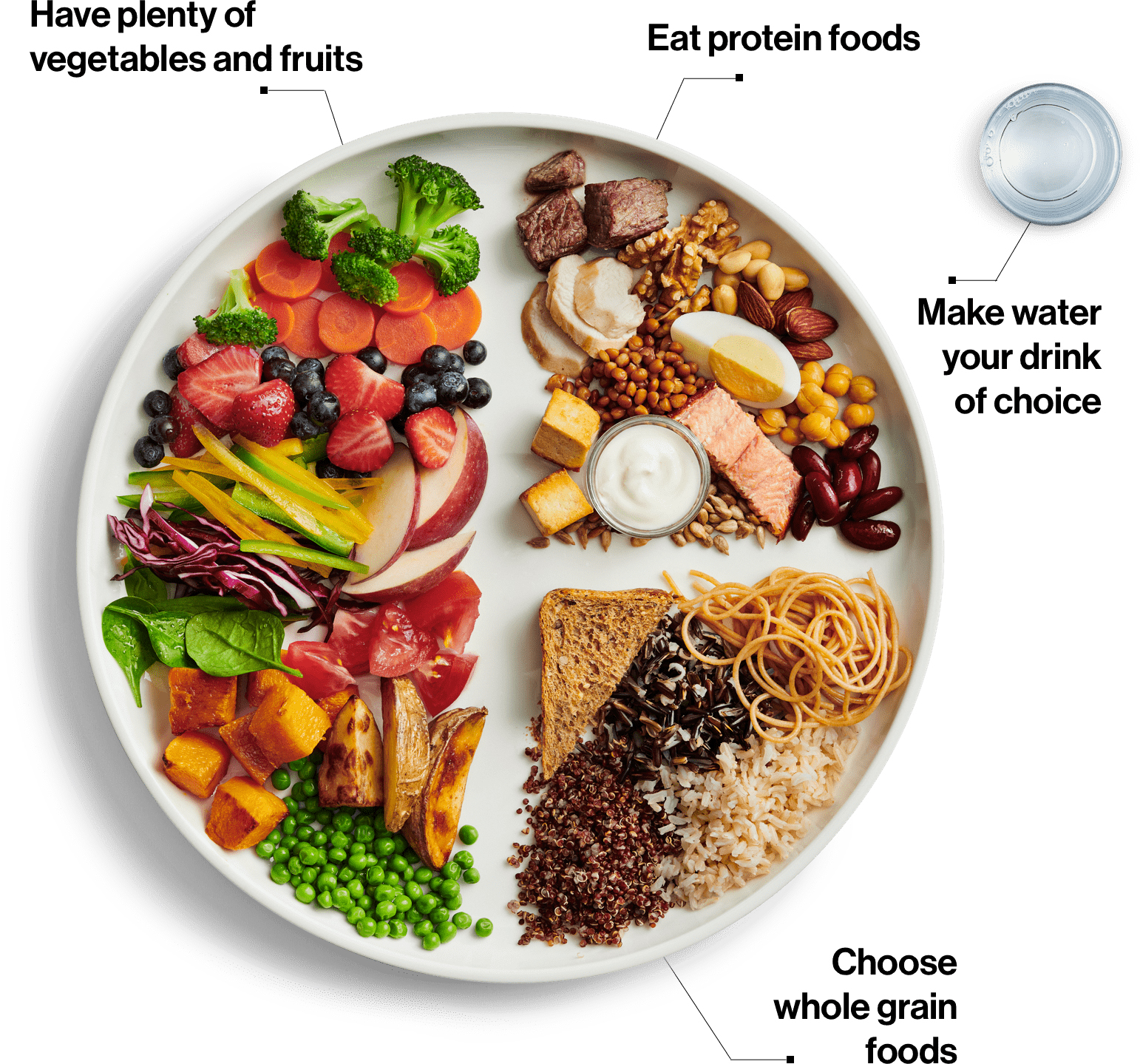
Canada’s Food Guide: Time to take action
The new food guide image conveys a simple message according to Health Canada: Eat a diet made up of roughly half fruits and vegetables, and half of the remaining two categories — easy as that.
“It doesn’t need to be complicated folks,” Petitpas Taylor said. “It just needs to be nutritious, and, might I dare say, fun.”
However, the overall simplicity of the new guide is still receiving mixed reviews and skepticism.
If we look back at the previous prescription approach it was unachievable and quite frankly, directed towards children (you remember the four food groups rainbow in elementary school). The new food guide has simplistic yet powerful imagery that encourages people to make realistic changes to live their best life.
We can now say goodbye to the recommendations to eat a specific number of serving sizes across each of the food groups. Gone is information about what makes up a serving size for different types of food. Let’s be honest, did you ever weigh, scale, and categorize your foods so that you ate the prescribed amount of food for each food group? Of course not, nobody has the time for that!
Dairy Products: So long milk, it was good while it lasted
Milk, for as long as we can remember, has always been a staple of the Canadian diet. Its nutritional benefits were linked to bone and dental health, diabetes prevention, and heart health.
As the times are changing we are entering a new era of healthy eating and health professionals are putting dairy under the microscope. Not just milk is under scrutiny, its the entire dairy category! That includes items such as cheese, cream, butter, yogurt, and ice cream, just to name a few.
Many people are disgruntled with the removal of dairy as an independent category. It has been placed into another category that we can agree may be less visual, but it’s still a part of the food guide. It has become a misconception that dairy is deemed “unhealthy”. Dairy products still offer a variety of different benefits but the traditional dosage or “3 pints per day” is just unnecessary. To follow suite, dairy consumption/sales have also been decreasing for the last 10 years according to the government of Canada.

Dairy Products: The alternatives are getting more attention
For those of you that love dairy you are in luck. A variety of alternatives are at your disposal that are extremely competitive with cows milk when it comes to nutrients, fats, and calcium. If you are intolerant and allergic to cows milk you can still consume some of the alternatives (almond milk). You may have already identified the significant changes happening in the United Kingdom. Non-dairy sales were three times bigger than dairy sales at Whole Foods Market in the UK this year (2019). This means that dairy is not completely disappearing but consumers are focusing their attention on many other alternative forms.
- Almond milk
- Soy milk
- Coconut milk
- Rice milk
- Oat milk
Depending on which alternative fits your lifestyle, you may be able to decrease costs by making it at home and, therefore, decrease damaging environmental impacts while maintaining sufficient nutrient intake.
Milk Nutrition: What are Caddle members saying about milk?
You spoke up about milk consumption and the changes to the Canadian food guide. The majority of our respondents were millennials (in their 30’s) and from Ontario. Here is what we gathered:
- Out of the 92% that consume dairy, 62% disagree with the new food guide
- Large percentage of the respondents had small children at home (increased milk consumption)
- 50% consume milk for the taste and 43% said that they consume milk for its nutritional value
- 73% of members said they didn’t consult anyone about their dairy consumption
Dairy Products: Decreased consumption comes at a price
Changes that have been made to the Canadian food guide have outraged dairy farmers and rightfully so. Milk has been removed as an independent category and grouped into proteins. With milk consumption decreasing in general, it’s worrisome for stakeholders in the dairy industry.
The Canadian government places significantly high tariffs on importing milk into Canada. This is preventative measure attempts to decrease the market saturation of American products and protect local dairy farmers.
“The Canadian dairy industry is a key driver of our national economy and represents one of the largest agri-food industries in the country,” said Wally Smith, President of Dairy Farmers of Canada.
Canada’s dairy industry brings in about 20 billion in GDP, 3 billion in tax contributions and over 200,000 full-time jobs. The question that we have to ask ourselves as consumers is, are we willing to ignore new research findings in order to support the dairy industry?
Did you say a Plant Based Diet?
Some of you are wondering, what is a plant based diet? Others might be thinking how can this diet be sustainable long term?
No, a plant based diet doesn’t mean that you have to go into your fridge or freezer right now and get rid of that steak or chicken.
It means that you should consciously prioritize fruits, vegetables, nuts, grains, legumes, beans, seeds, and oils. Aside from the array of health benefits that are associated with this diet it also comes with environmental sustainability.
When switching to a plant based diet it comes with a bit of homework. You need to understand what nutrients you receive from the foods you plan on giving up and ensure that you are receiving the equivalent in the foods you plan on consuming.
The best way to get started is just allocating one day of the week to strictly eat plant based foods. Following food guides or industry professionals online to get the best recipes and up to date information doesn’t hurt either. Check out the example!
Plant Based Diet Example:
Breakfast: Breakfast wrap with whole grain tortilla, scrambled egg(s), black beans, peppers, onions, and your choice of sauce.
Lunch: Mediterranean salad with fresh lettuce, cucumbers, chick peas, lentils, goat cheese, avocado, and dressing.
Dinner: Grilled veggie kabobs with green and red peppers, grilled tofu, spinach salad, and zucchini.
Canada’s Food Guide: What you should takeaway from the changes
Canada’s updated food guide has retired the traditional rainbow and four food groups in order to appeal to a wider audience. It has demoted meat and dairy by placing them into categories with a wider range of proteins.
The new food guide accurately reflects the existing research about human anatomy and healthy living, while limiting the biased input from special interest parities.
Some of the main reasons people are cutting milk are connected to the environment, health, and ethics (religious beliefs). If you want to keep milk as apart of your daily routine consider the array of different alternatives that offer great taste, nutritional benefits, and no environmental impact.
This food guide does not spoon feed you like it has in the past. It requires you to take action by showing you what your plate should look like when you sit down to have a meal. It is apart of Canadian culture to cook, talk, laugh, and eat together.
It’s time to put down the processed food that have become so accessible and convenient. We should give the new food guide a chance and see if it can have a positive impact on society and our wellbeing.
About Caddle
Thanks for reading our blog post! If this is your first time on our webpage you may be wondering who we are and what we do?
Caddle is a data insights company that has a passion for understanding market trends which can be translated to the market industry leaders for the benefit of understanding the buying behaviors of their consumers.
Click this link to find out more and earn some cash back from our surveys!
[simple-author-box]
How long does it take plastic to decompose – longer than you think
How long does it take plastic to decompose?
To be completely frank, that’s a difficult question. Modern plastic has really only been in production for about 50 years. But a lot of those plastics are still floating around the world today. The lifetime of single-use plastics varies from product to product, but this article aims to give a ballpark range for single-use products like plastic water bottles, plastic bags, and plastic straws.
What is plastic?
The first synthetic plastics were developed in early 1907. What gives plastic its strength and flexibility is the length of the molecule chains from the polymers that make plastic. The longer each chain of molecules, the stronger, more lightweight and flexible the plastic will be. When petroleum and fossil fuels were shown to produce longer chain polymers this then began the shift from natural to synthetic plastics.
Why is plastic bad?
Nowadays the majority of plastics used every day are made of polyethylene terephthalate (PET), which is a petroleum-based synthetic plastic.
What’s the harm in that you ask? Well, you know the stuff you put in your car that makes your car go? That’s made out of petroleum too and we all know how bad that is for the environment. So think about how bad that effects our landfills, oceans, and the world as a whole. Probably not the best remedy.
With most plastic being primarily petroleum-based for its strength, it also means that the majority of plastics won’t through biodegradation like natural products. Meaning it’s pretty damn tough to get rid of the stuff because it lives on this planet for quite some time.
How long does it take a plastic bottle to decompose?
No question about it, plastic is pretty bad and is made of some questionable materials that harm the planet. So, how long does this plastic stuff stick around for? Well, according to some researchers, they estimate that due to the PET used in objects like plastic bags, plastic water bottles and plastic straws, it could take upwards of 450 years to decompose.
Yep, a rather frightening estimation. Let’s break that down so it really hits home for you. Breaking that down is equivalent to 5,400 months, or 21,600 weeks, or 1,971,000 days just for one single plastic bottle to decompose. Now think about how many plastic water bottles are on this planet. Probably not so thirsty anymore now, are you? Check out some alternatives here.
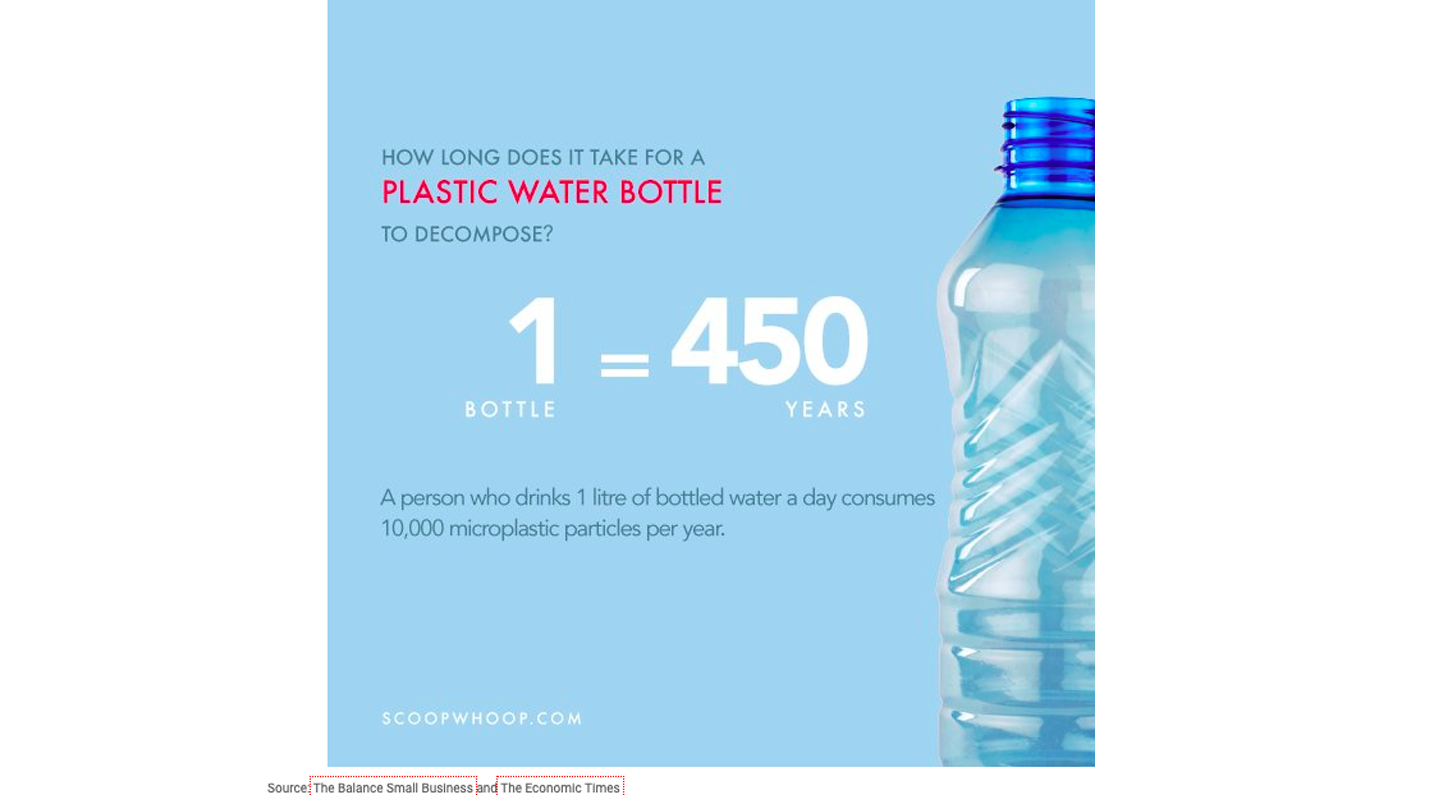
How long does it take a plastic bag to decompose?
So, what about plastic bags, how long do they take to decompose?
Answer: between 10 and 1,000 years.
This is a rather frustrating statistic. If it takes 1,000, that’s concerning. But if it takes only 10 years, that’s not so bad– is it?
Guess again. It all depends on how much ultraviolet radiation a plastic bag gets from the sun. If it’s baking in the sun, the bag could break down a lot sooner (i.e., 10 years) than a plastic bag that’s hidden from the sun (i.e., 1,000 years).
Even if it takes 10 years, this is still concerning. Polyethylene in plastic bags does not biodegrade. It simply becomes brittle, causing the bag to break down into tiny plastic pieces. In other words, there may not be a plastic bag floating in the wind or oceans. Instead, there are now tiny microplastics being scattered around the world.
To fix this, maybe it would be best to go back to paper bags for our shopping needs. The alternatives are endless. You can find more great, simple options here.
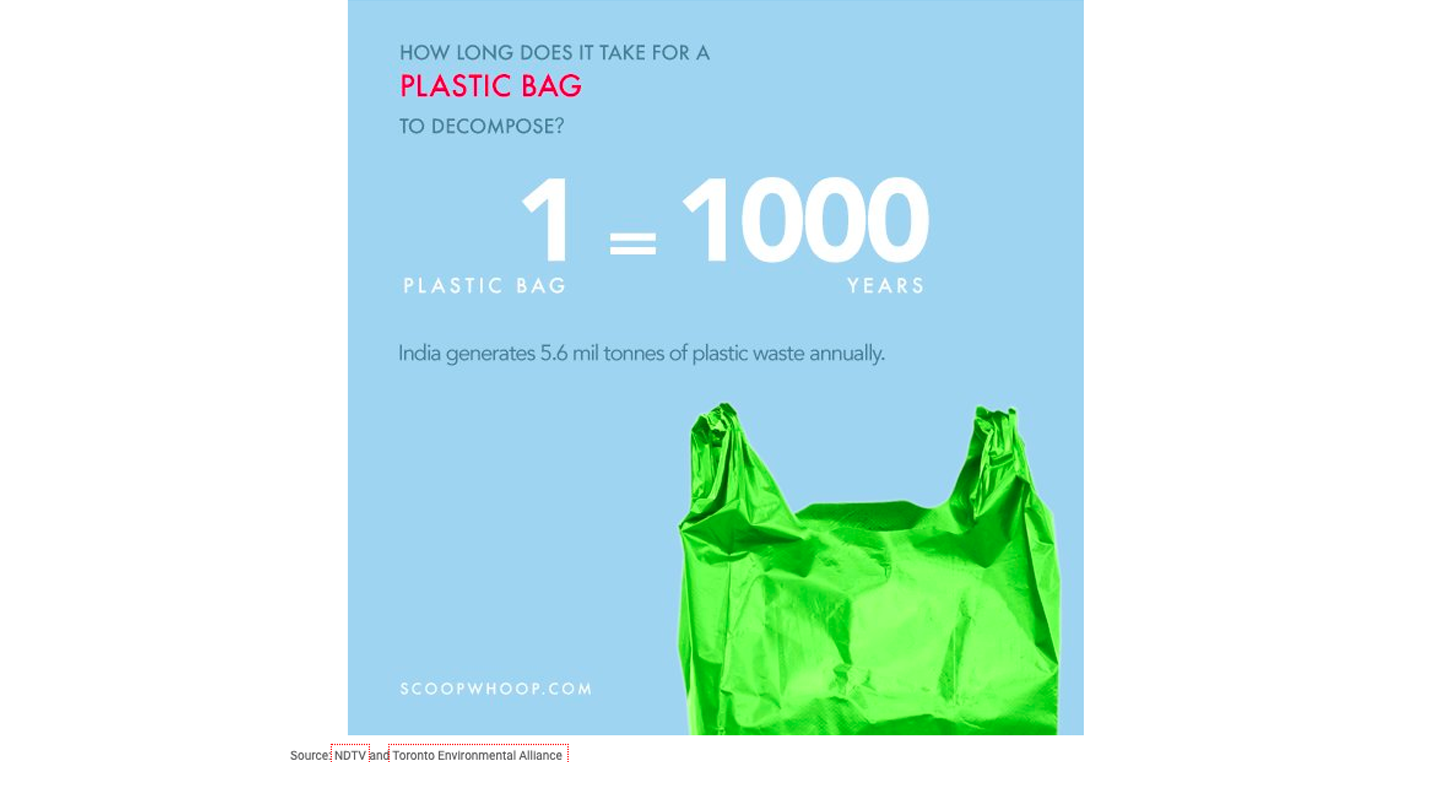
How long does it take a plastic straw to decompose?
What was once the most convenient tool is now going through a shift for being one of the most hated plastic products – plastic straws.
It will take approximately 200 years for a plastic straw to decompose. Much longer than the time they have been in modern existence.
So, what can we do? Well, continuing to throw our plastic straws into the garbage would be a step in the opposite direction since they’re not easily recyclable due to their size. For starters, I would suggest alternatives. There are always alternatives, like stainless steel, paper, or biodegradable straws. Better yet, don’t use a straw at all! or just go without a straw. Go cold turkey on the drinking apparatus!
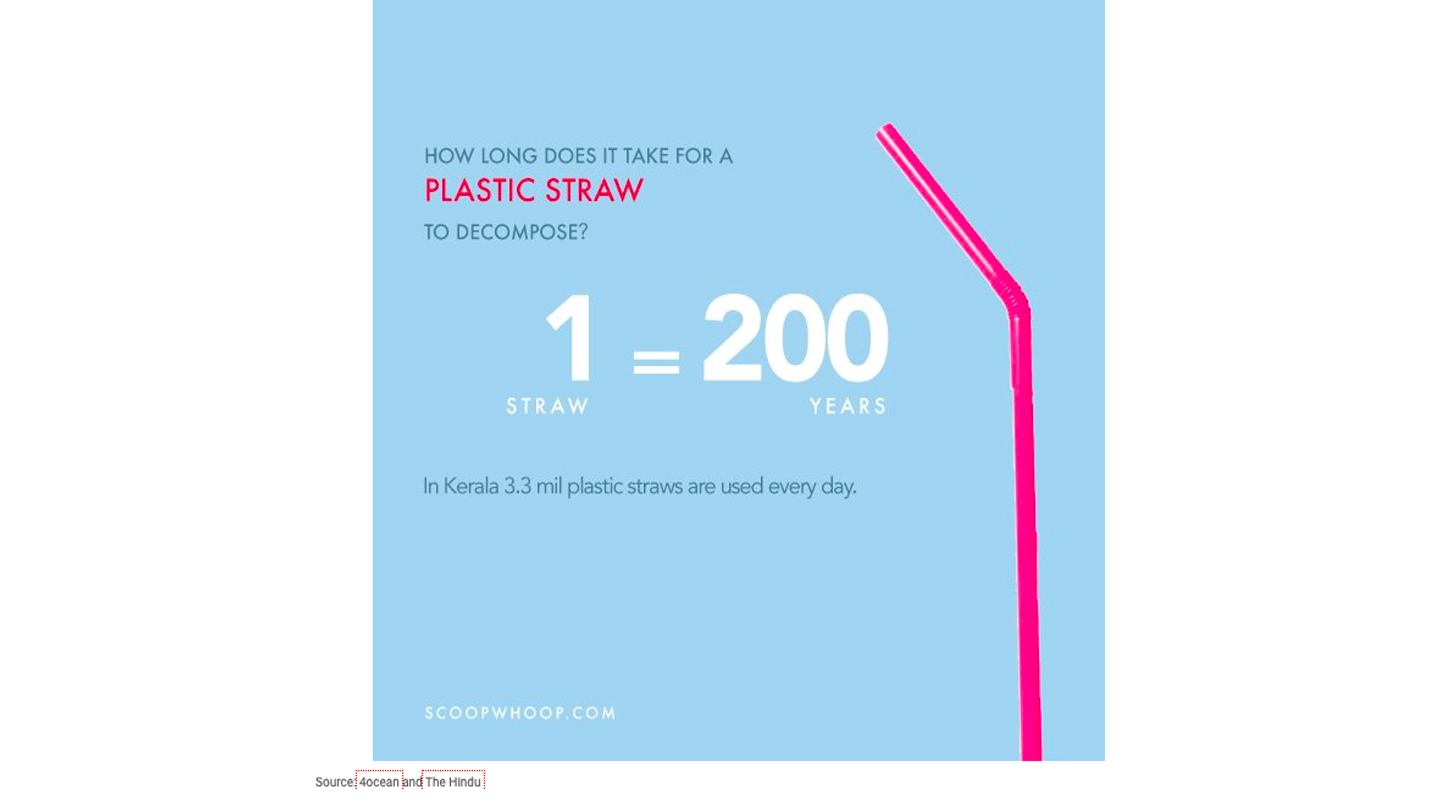
What impact does recyclable plastics having on this situation?
Scattered around this plastic world, 12 million tonnes of plastic waste and materials end up in the oceans each year moving us closer and closer to the plastic world we are trying to escape from. We need to be better.
Right now, we as Canadians recycle only 11% of all plastics with the other 89% being tossed into our landfills, oceans and or being incinerated into harmful fumes. Recyclable plastics can drastically change this statistic by removing all these harsh plastics from the environment and utilizing them to make others. If done correctly, those plastic grocery bags can be made and remade into the same bags or other plastic products instead of spending the next hundred years in a landfill or fixed to some innocent sea creature.
Plastic Water Bottles: Your guide to ditching single-use plastic
Plastic water bottles
After the rise of plastic water bottles, companies recognized its potential as an indestructible material that you could drop, kick, smash, or leave on the shelf for weeks.
What they forgot to consider is how the heck is this material going to break down or decompose, and at what cost?
We are now only considering this a problem after we have spent over 11.7 billion dollars on 8.8 billion gallons of water. To put that in perspective, we use 2 million water bottles every 5 minutes.
The average adult’s body is composed of at least 55-65% water. So I’m not advocating for you to stop drinking water, but I challenge you to rethink the way you drink it. (Let us know how you use plastic by clicking here.)
We are going to cover 5 key areas:
Plastic water bottle pollution
If you want to talk about multitasking, plastic water bottles are the all-time champions! Not only do they pollute during the process of extracting and processing fossil fuels, they even get you at the back end. Approximately only 10% of water bottles are effectively recycled. Pollution not only impacts our climate, but it can also lead to severe health risks for humans and animals.
“Studies estimate there are now 15–51 trillion pieces of plastic in the world’s oceans — from the equator to the poles, from Arctic ice sheets to the seafloor”.
It’s extremely difficult, if not impossible, to remove all the plastic once it has made its way into the ocean. Our solution to this problem needs to begin on land. Fish, sea birds, and other marine mammals are ingesting thousands of plastic microfibers each year.
Government Intervention: We have gone too far
Campaigns and petitions are pushing for plastic(s), especially water bottles, to be considered pollutants. Governments and activists are beginning to ban together in their fight to eliminate single-use plastics. We have already seen policy changes in San Francisco, Washington, Kenya, India, France, Bangladesh and even in our own backyard.
“The Justin Trudeau-led government also decided to take necessary measures to reduce plastic pollution in Canada. Canadians are trying to ban plastic bottles, bags, and straws in as early as 2021. However, in Montreal, there is already a ban on plastic items”.
How long does it take for a plastic bottle to decompose?
So do plastic bottles even break down since they are so resilient? In fact, they do… after about 1000 years. Once they break down, you guessed it, they leak harmful chemicals into the ocean or soil. Sunlight or UV rays are often the most effective in breaking down plastics that didn’t make it to recycling facilities.
You might have read about the uninhabited island where over 4000 pieces of plastic were found, ranging from water bottles to plastic straws. Maybe you have seen your favorite restaurants and coffee places decrease prices when you bring your own mug. An issue that has been overlooked for years is coming back to bite us.
Decades after our existence people will still be cleaning up the water bottles that we are using today. Even Aquaman’s Jason Momoa has taken the initiative to help eliminate single-use plastic on a global scale.
Tap water or bottled water?
There has been an on-going debate surrounding tap water versus bottled water. A study was completed testing over 1000 water bottles from 103 different companies. The test was conducted to determine if there was a significant increase in water quality and purity in relation to tap water. The national resource of the defense council said that only one-third of the companies actually exceeded industry standards. In other words, bottled water is no different than tap water.
Environmental research provides evidence that bottled water is falsely advertised as pure and filtered. Despite this information, the plastic water bottle industry is still generating approximately 2.5 billion in revenues.
How is this even possible with what we know about plastics?
Bottled water companies attempt to capitalize on consumer’s fears of tap water suppliers. Brands such as Fiji, Smart Water, and Perrier have built their success by selling a desirable brand image.
Consequently, these products are feeling the pressures of increased sustainability as we try to minimize our environmental impact.
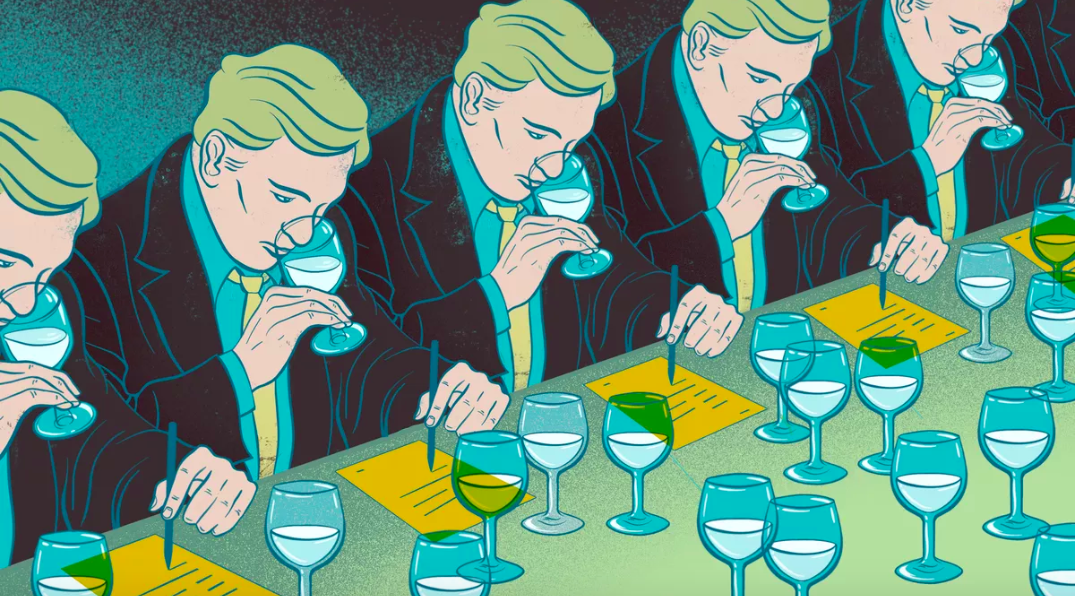
Still skeptical about tap water? Go to DrinkSoma and get a sleek-looking water filter!
Reusing Plastic Water Bottles
Now that we are on a roll, let’s look at another myth. People often think that reusing plastic bottles has severe side effects. Some people even say its considered cancer-causing.
This was deemed a rumor that was traveling around the web and you can visit the cancer society website to receive the full story. Keeping this in mind, do you ever hear people throwing around the term BPA?
If you’re like me, you nod your head but have no idea what they are talking about. BPA is found in many hard plastics. Its exposure to heat and extreme cold over long periods of time can cause the plastic to break apart into your beverage.
Now, this won’t cause any drastic, life-altering symptoms, but why take the risk? Many organizations offer BPA free bottle solutions. Make sure you identify this feature when buying your reusable bottle.
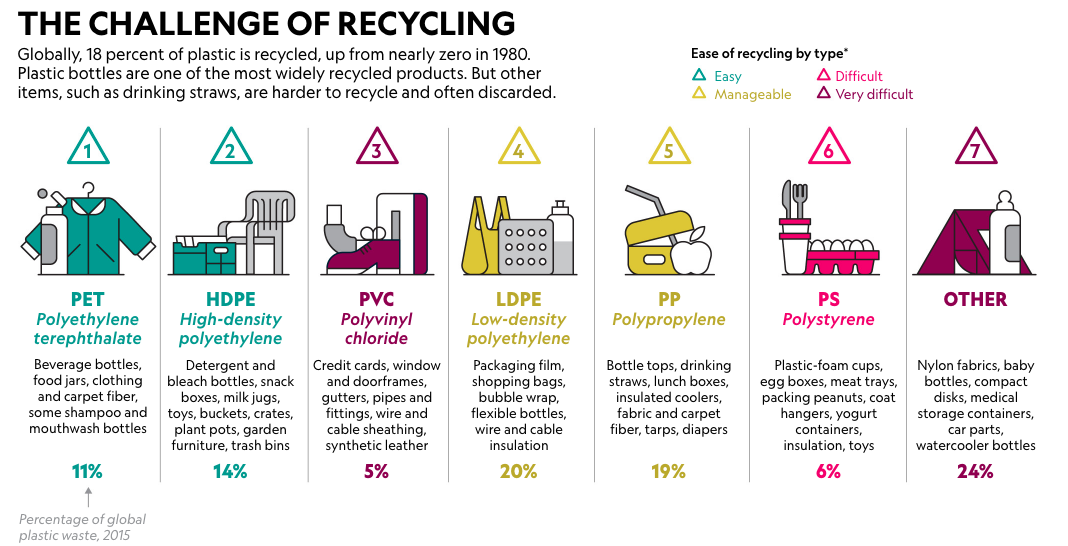
Recycling Plastic Water Bottles
Recycling water bottles is often a difficult procedure with strict rules and guidelines that need to be followed. We are all guilty of using plastics and maybe you are drinking out of a plastic bottle right now. However, I don’t think we should take all the blame.
We lack education and awareness surrounding topics such as plastics and pollution. Take the CBC article for starters. Canadians are paying millions of dollars in sorting costs because we are throwing items in the blue bin that aren’t even recyclable!
You mean I can’t put my old T-shirt in the blue bin? Seriously, they find this stuff every day! When you do use plastic products make sure you stay informed regarding what items are considered recyclable.
Plastic Alternative: Canned Water
Aluminum is much easier to recycle than plastic bottles. It can be recycled more times than plastic, it requires much less energy during this process, and there are often incentives to return cans. Aluminum is recycled 50% of the time compared to plastic bottles at 10%.
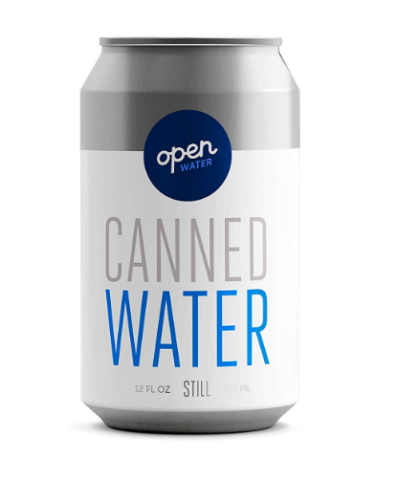
Plastic Alternative: Boxed Water
Boxed water not only looks great but it’s recyclable and biodegradable. If you still want the convenience of buying at any store make the switch to box water!
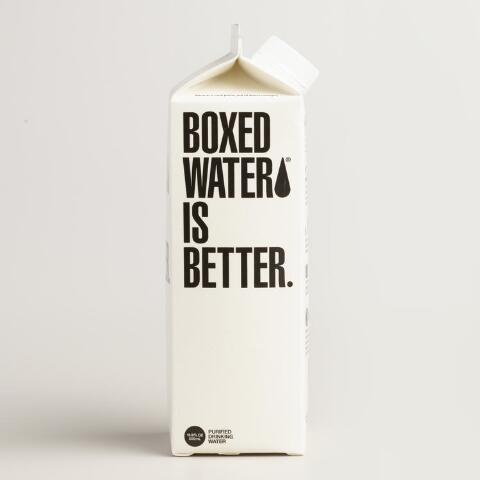
Plastic Alternative: Water Filter
Water filters used to be big, ugly, and annoying to maintain. Companies like Soma or Brita have taken this industry by storm giving filters a sleek design and becoming a must-have in the household.
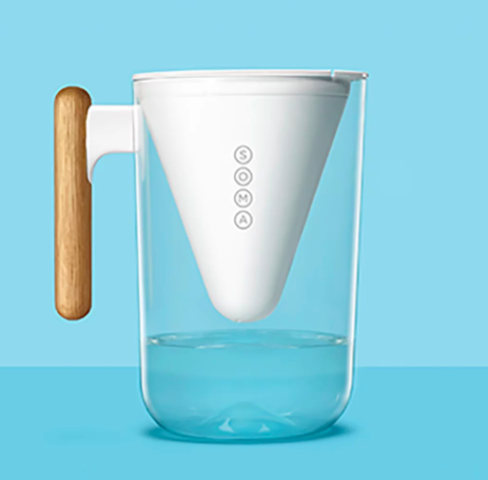
Plastic Alternative: Tap Water
You are already paying for it why not utilize it! You can pair it with the previously mentioned filters or just put it in a glass.

Plastic Alternative: Stainless Steel Bottle
An easy to clean, durable, and customizable option to take your water on the go. They come in a variety of different sizes and colors to fit your needs. Say goodbye to spending $5.00 a day on disposable bottles.
[simple-author-box]
